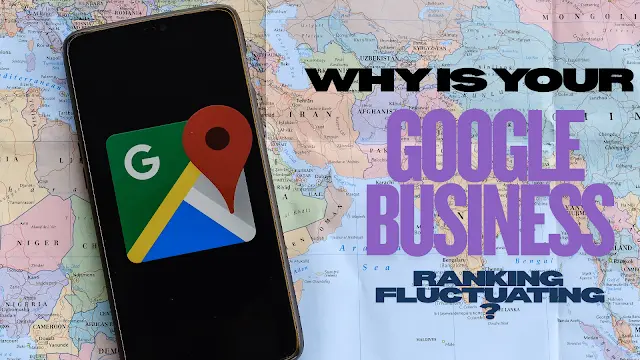
Ever searched for your business on Google and found it at the top — only to check again on another device and it's nowhere to be seen?
You're not alone.
Many business owners get confused (and sometimes frustrated) when their Google Business Profile (GBP) ranking changes between desktop and mobile searches. But the truth is — it's not a glitch, and you're not doing anything wrong. Google simply works differently across devices.
Let's break down why your local ranking shifts and how you can improve your visibility no matter where people are searching from.
Google doesn't treat all devices the same. Mobile-first indexing means mobile performance matters more. On mobile, site speed, responsive design, and ease of navigation directly affect visibility — more than they do on desktop.
If your site loads slowly or looks clunky on mobile, your GBP may rank lower.
Mobile devices use GPS + Wi-Fi + network data to pinpoint location accurately. Desktops mostly use IP-based data, which is broader.
This means a user standing near your store with their phone is more likely to see your GBP than someone on a desktop a few kilometers away — even if they're searching the same keyword.
Let's take our own agency — Qaushik Labs – Digital Marketing & Web Development Agency.
We noticed that when someone searches "digital marketing agency near me" on their mobile phone while standing near Cyber Hub or DLF Phase 3, our profile often shows up in the top local pack. But when searching the same keyword from a desktop in another sector of Gurgaon, we might not appear at all.
Why?
Because mobile rankings are influenced heavily by the exact physical location of the user. The closer the person is to our office, the more likely they are to see us.
Google constantly learns from how users behave. Mobile users often search with high intent — they want to call, visit, or get directions fast. Desktop users might browse longer.
This shift in behavior influences ranking. If more people interact with your GBP via mobile, Google might boost it for similar mobile searches.
The search layout changes too. Mobile shows a carousel-style local pack, more focused on maps, reviews, and call-to-action buttons. Desktop offers a wider screen and more listings in a single view.
So your position may shift simply because of how the interface presents results.
Mobile searches like "salon near me" or "best cafe nearby" use real-time location to fetch hyperlocal results. If the user is physically far from your store, you might not show up — even if you're the top result on desktop when searched from a broader area.
- Make your website mobile-friendly
- Improve your GBP with updated info, photos, Q&A, and active posts
- Get more 5-star reviews from local, mobile users
- Add location-specific keywords like "in Gurgaon" or "near MG Road"
- Use UTM parameters or tracking URLs to compare performance on desktop vs mobile
Don't panic if your Google Business Profile looks great on one device but disappears on another. It's just how Google adapts to different user contexts and behaviors.
Focus on mobile SEO, real-world engagement, and keeping your GBP updated — and over time, you'll see more consistency (and better visibility) across all devices.
This typically happens because mobile search uses more precise location data (GPS) and prioritizes businesses very close to the user's physical location. Desktop search covers a broader geographic area and may show different businesses based on IP location, which is less accurate.
Always prioritize mobile optimization first. Google uses mobile-first indexing, meaning your mobile site version determines your overall search rankings. A well-optimized mobile experience will improve both mobile and desktop visibility.
Use tools like Google Search Console to see device-specific performance, test searches manually from different devices and locations, and implement UTM tracking codes to monitor traffic sources. Consider using local rank tracking tools that can simulate searches from various devices and locations.
While "near me" searches work on desktop, they're much more effective and commonly used on mobile devices because of precise GPS location data. Mobile "near me" searches typically show businesses within a 1-2km radius, while desktop versions may show broader results based on less accurate IP location.
Mobile optimization improvements can be seen within 2-4 weeks, while broader local SEO changes typically take 2-3 months to show full results. Google Business Profile updates may show effects within days to weeks, depending on the changes made and local competition.